ISSN 2348-1218 (print)
International Journal of Interdisciplinary Research and Innovations ISSN 2348-1226 (online) Vol. 8, Issue 3, pp: (76-88), Month: July - September 2020, Available at: www.researchpublish.com

ISSN 2348-1218 (print)
International Journal of Interdisciplinary Research and Innovations ISSN 2348-1226 (online) Vol. 8, Issue 3, pp: (76-88), Month: July - September 2020, Available at: www.researchpublish.com
1, 2, 3 ITM University, Gwalior,
M.P., IndiaAbstract: Cognitive Radio (CR) is the key enabling technology which is used to sense, measure, learn, and be aware of the parameters of the radio channel, availability of power and spectrum, modulation schemes, radio’s operating environment, available infrastructures and number of active users etc. In this paper, a simulation framework of CRN is proposed which is based on NetSim Version 9.0 simulator. This framework can be used to investigate and evaluate the impact of operational interval on the performance parameters such as spectral efficiency, delay, Interference time, and throughput of the CRN. CRNs performance parameters such as spectral efficiency, delay, interference time, and throughput are evaluated over Cognitive Radio Networks (CRNs) using NetSim. This work also demonstrates some important network parameters such as packet transmitted, payload transmitted, and overhead transmitted. Individual Link throughput and application throughput are also demonstrated by enabling the real-time trace in NetSim at different operational intervals. These network performance parameters play an important role in real-time reliable applications. Analysis of the results demonstrate that the throughput and spectral efficiency increases with increase in operational interval. It is also demonstrated that the delay is decreasing with increase in operational interval.
Keywords: Cognitive Radio, CRNs, Primary User, Secondary User, Spectral Efficiency, Throughput, Operational Interval, NetSim.
Cognitive radio is one of the most promising technology for next generation wireless networks to improve spectrum utilization. A CR can change its transmission parameters such as frequency, transmission power, modulation, bandwidth etc. according to the information obtained from the environment [1]. A spectrum hole has been defined as “a band of frequencies assigned to a primary user, but at a particular time and specific geographic location, the band is not being utilized by that user. There is a problem of spectrum scarcity in wireless communication which could be resolved by proper utilization of spectrum. A lot of research studies on CR have been done to resolve the problem of spectrum scarcity [1]. With the rapid growth of wireless services, spectrum resource has become insufficient so it should be utilized more efficiently. Cognitive radio networks can increase the spectrum utilization by permitting Cognitive Radio users to obtain the spectrum bands which are not utilized by primary users in such a way so it will not create any interference to Primary Users. Authors in [3] proposed a relay selection approach with channel allocation for CR relay channels. NetSim CR module works on the IEEE 802.22 CR standard and the standard parameters are set from a given set of parameters. Besides, it can connect a CR with Internetwork devices and run all the protocols supported in Internetworks [10].
Fig. 1 is representing a generalized Cognitive radio network which is consisting number of Cognitive Radio Users, Primary Users, Base stations etc. Each Cognitive Radio user is allowed to access the licensed channels of Primary Users, which are not utilized by the primary users. Primary Users are also known as Licensed Users/Incumbent whereas Cognitive Radio Users are called as Unlicensed Users/Secondary Users.
Cognitive Radio was proposed as the means to promote the efficient use of spectrum by exploiting the existence of spectrum holes. In this paper, Primary Users and Cognitive Radio Users are operating in the 54 - 60 MHz frequency band. This frequency band (54 - 60 MHz) is utilized by Primary User for 10 seconds and then Cognitive Radio Users access this band for the duration of 2, 4, 6, 8, and 10 seconds of time. With an interval of every 2 seconds Cognitive Radio Users
ISSN 2348-1218 (print)
International Journal of Interdisciplinary Research and Innovations ISSN 2348-1226 (online) Vol. 8, Issue 3, pp: (76-88), Month: July - September 2020, Available at: www.researchpublish.com
access the band of Primary Users (Incumbent) in an opportunistic manner. This is also termed as dynamic access of spectrum band and when Primary User is not utilizing this band a spectrum hole is created. It is also shown that the spectral efficiency is better utilized when the operational interval is increasing in CRNs. Further, Throughput is also increasing with the increase of operational interval for a considered network scenario.
In this work some important performance parameters demonstrates some important network parameters such as packet transmitted, payload transmitted, overhead transmitted, Individual Link throughput, and application throughput are demonstrated by enabling the real-time trace in NetSim at different operational intervals. These performance parameters play vital role in real-time applications. Analysis of the results demonstrates that the throughput and spectral efficiency increases with increase in operational interval. It is also shown in the results that the delay parameter is decreasing with increase in operational interval which ultimately results in increase in throughput
Fig. 1 A generalized Cognitive Radio Network consisting of CR users, Base stations, and Primary Users [8]
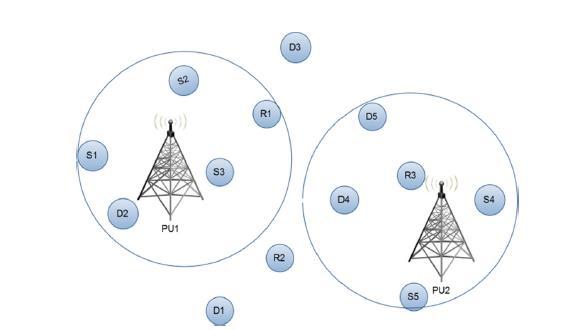
The remainder sections of this paper are organized as follows: Section II, describes the Performance Parameters. Section III, demonstrates Modeling of a Cognitive Radio Network Scenario. Section IV, demonstrates the Simulation results and Discussion. Finally, Section V concludes the work.
Spectrum Efficiency: It refers to the information rate that can be transmitted over a given bandwidth in a specific communication system. It is a measure of how efficiently a limited frequency spectrum is utilized by the PUs and SUs with help of CR by using physical layer protocol, and media access control protocol.
Delay: It is the average amount of time taken calculated for all the packets to reach the destination from the source. This delay is related to the distance between the user and base station.
Throughput: It is the rate of successfully transmitted data packets in unit time in the network during the simulation. The unit for throughput is usually bits per second. The maximum data rates of the TX and RX depend on the bandwidth of the circuits. The objective of the paper represents that improving the communications quality of the radio. Maximizing the throughput deals with the data throughput rate of the system. Total user data or payload delivered to their respective destination every second.
Throughput (in Mbps) =Total payload delivered to destination (in bytes) *8/ Simulation time (in micro seconds).
Interference time: It represents the interference time of the primary users (incumbents) with base station or cognitive radio CPE. The efficiency of spectrum sharing can be improved by minimizing the interference.
ISSN 2348-1218 (print)
International Journal of Interdisciplinary Research and Innovations ISSN 2348-1226 (online) Vol. 8, Issue 3, pp: (76-88), Month: July - September 2020, Available at: www.researchpublish.com
Spectrum Sharing: It refers to providing the fair spectrum scheduling method, one of the major challenges in open spectrum usage is the spectrum sharing.
Link Throughput: It refers to the total bytes transmitted over the link. The calculation of total bytes is required to figure out these parameters.
Link Throughput (in Mbps) = Total bytes transmitted over the link ∗ 8/ Simulation Time (in micro seconds)
A generalized network scenario can be modelled in NetSim by using different devices, links, routers, base station, wired/wireless nodes etc. along with one application. In creating scenario, each device is dragged and dropped. After this, configuring of devices and links are done through which property of each are set accordingly. Simulation is essential part for developing new technology, prototype, algorithms evaluation, system performance etc. It requires a developing a model is the first step in simulation. This developed model represents the characteristic parameters of the selected system and operation of the system over time is represented by simulation.
In this section, a Cognitive radio network scenario is created using NetSim as shown in Fig. 2. In Fig. 2, two CR Users, One Primary User, one base station, one router, and two wired nodes are interconnected by using wired/wireless links as shown in figure. As depicted in scenario, devices are marked with number 1 to 8 so total eight number of nodes are taken into consideration. Properties of each device are also set according to requirement this is called as configuring the devices/links. Application 1 is created between Cognitive radio user 1 and Cognitive radio User 2. Similarly, Application 2 is created between Node 2 (which is CR 1) and Node 6 (which is wired node 1).
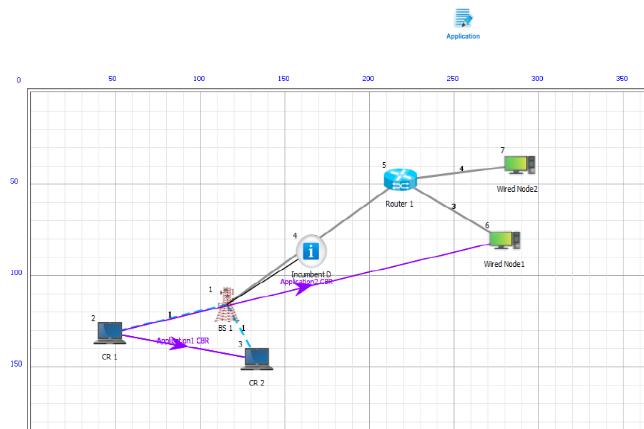
By turning on the event trace, different application parameters and link throughput parameters are traced and are demonstrated in different Figs. for different operational intervals.
Fig. 2 Cognitive radio network scenario using NetSim
In this section, simulation results are demonstrated for considered network scenario. Simulation parameters are assumed as shown is Table 1.
Table 1: Simulation parameters
Type of traffic CBR
Operating frequency of PU and SU 54-60MHz
Operational Time 10 Seconds
ISSN 2348-1218 (print)
International Journal of Interdisciplinary Research and Innovations ISSN 2348-1226 (online)
Vol. 8, Issue 3, pp: (76-88), Month: July - September 2020, Available at: www.researchpublish.com
Distance between PU and SU 100 m
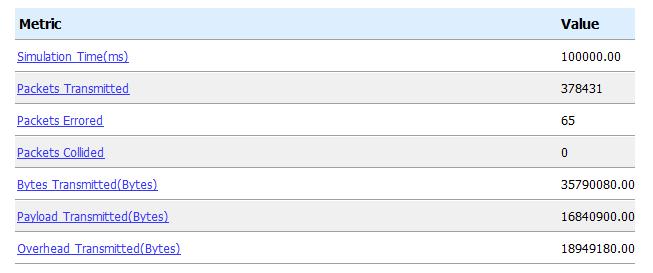

Simulation time 100 Seconds
Channel bandwidth 6 MHz
Channel characteristics Fading and shadowing Modulation QPSK
All the simulation results are demonstrated by using NetSim Version 9.0 Network and traffic simulator [10]. In this work, a CRN scenario in the presence of Primary User is considered. Individual Link Throughput is measured for different operational intervals. Application Throughput for Application 1 which is Node 2 to Node 3 and Node 2 to Node 6 is also plotted for different operational intervals. Here, Node 2 and Node 3 are CR Users in Application1 acting as Source and Destination, respectively. Similarly, in Application 2, Node 2 and Node 6 are acting as Source and Destination, respectively. As shown in Table 1, the operating frequency band of Primary and Secondary users is 54 - 60 MHz The Primary User utilizes this frequency band (54 - 60 MHz) for 10 seconds after an interval of every 2 seconds. So the Secondary User uses this allocated frequency band of Primary User in an opportunistic manner, i.e., during the interval of 2 seconds when Primary User (Incumbent) is not utilizing the band, a spectrum hole is created and the Secondary User utilizes it to transmit it’s information.
In Fig. 4 and Fig. 5, the values of different network metrics such as simulation time, transmitted packets, number of error packets, number of collided packets, transmitted bytes, transmitted payload, and transmitted overheads have been presented after performing the simulation. In the same manner network metrics for operational interval 2, 4, 6, and 8 are calculated but not shown here due to page limitation and these results are utilized for calculating performance metrics such as spectral efficiency and throughput of the system.
Fig. 4 Cognitive Radio Network metrics for for Operational Interval =0 Seconds
Fig. 5 Cognitive Radio Network metrics for for operational interval =10 Seconds
Fig. 6 (a), (b), (c), (d), (e ), and ( f) are representing Link 1 Throughput with simulation time. These figures are plotted to analyze the Link 1 Throughput for different Operational Intervals, i.e., for Operational Intervals of 0, 2, 4, 6, 8, and 10 Seconds, respectively.
ISSN 2348-1218 (print)
International Journal of Interdisciplinary Research and Innovations ISSN 2348-1226 (online) Vol. 8, Issue 3, pp: (76-88), Month: July - September 2020, Available at: www.researchpublish.com
It is noticed from these figures that the Link 1 maximum throughput is 3.179509 Mbps and minimum is zero for each case. But another important observation is that the nature of the curve with simulation time for each operational interval is different which is showing that its mean and standard deviation is also different in each case. So we are getting different mean and standard deviation for different operational intervals.
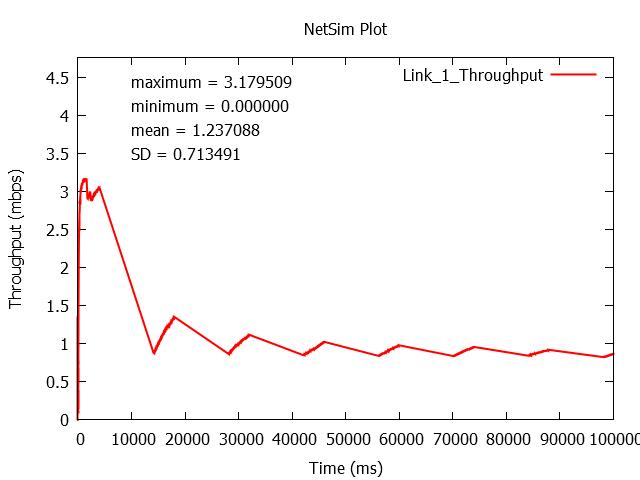

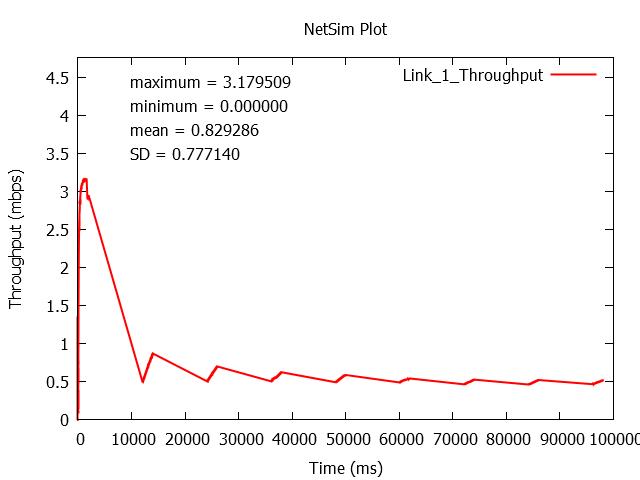
Fig. 6 (a) Link 1 Throughput for operational interval 0 seconds
Fig. 6 (b) Link 1 Throughput for operational interval 2 Seconds
Fig. 6 (c) Link 1 Throughput for operational interval 4 Seconds
Fig. 6 (d) Link 1 Throughput for operational interval 6 Seconds
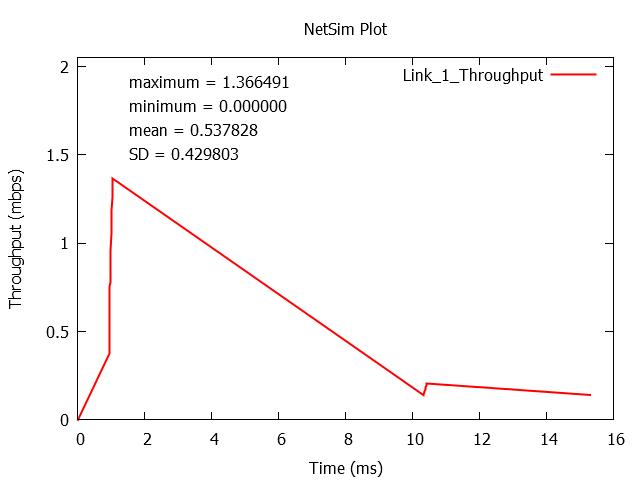
ISSN 2348-1218 (print)

International Journal of Interdisciplinary Research and Innovations ISSN 2348-1226 (online) Vol. 8, Issue 3, pp: (76-88), Month: July - September 2020, Available at: www.researchpublish.com
Fig. 6 (e) Link 1 Throughput for Operational Interval 8 Seconds
Fig. 6 (f) Link 1 Throughput for Operational Interval 10 Seconds
Results depicted in Fig. 7 (a), (b), (c), (d), (e ), and ( f) are for Link 2 Throughput with simulation time. These results are plotted to analyze the Link 2 Throughput for different Operational Intervals, i.e., for Operational Intervals of 0, 2, 4, 6, 8, and 10 Seconds, respectively.
It is noticed from these figures that the Link 2 maximum throughput is 1.361357 Mbps and minimum is 0.00 for each case same as above but Link 2 Throughput has reduced compared to link 1. Further, Fig. 8 (a), and ( b) are plotted which are showing the maximum throughput of Link 3 is 1.365200 Mbps and minimum is zero.

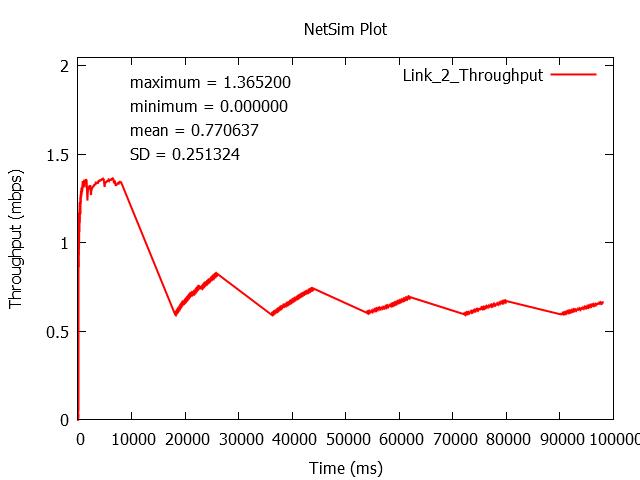

Fig. 7 (a) Link 2 Throughput for Operational Interval 0 Seconds
Fig. 7 (b) Link 2 Throughput for Operational Interval 2 Seconds
ISSN 2348-1218 (print)
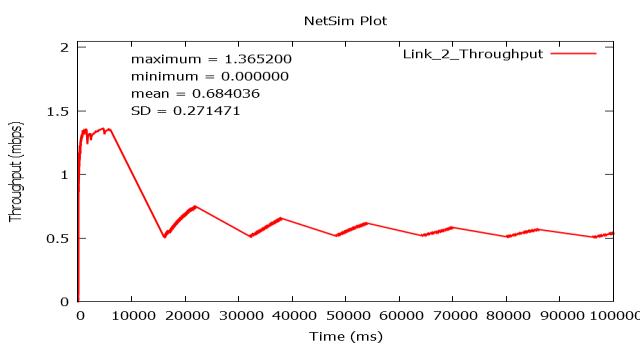

International Journal of Interdisciplinary Research and Innovations ISSN 2348-1226 (online) Vol. 8, Issue 3, pp: (76-88), Month: July - September 2020, Available at: www.researchpublish.com
Fig. 7 (c) Link 2 Throughput for Operational Interval 4 Seconds
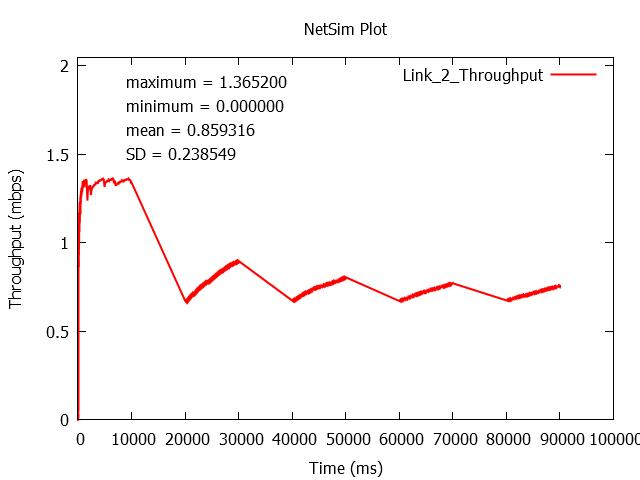

Fig. 7 (d) Link 2 Throughput for Operational Interval 6 Seconds
Fig. 7 (e) Link 2 Throughput for Operational Interval 8 Seconds
Fig. 7 (f) Link 2 Throughput for Operational Interval 10 Seconds
Fig. 8 (a) and (b) are representing Link 3 Throughput with simulation time. Similarly, Fig. 9 (a) and (b) are representing Link 4 Throughput with simulation time.
Next, Fig. 10 (a) and (b) are representing APP 1 Throughput with simulation time and Fig. 11 (a) and (b) are representing APP 2 Throughput with simulation time. Here, only some of the results are demonstrated and all results are utilized for analyze the network performance parameters.
ISSN 2348-1218 (print)

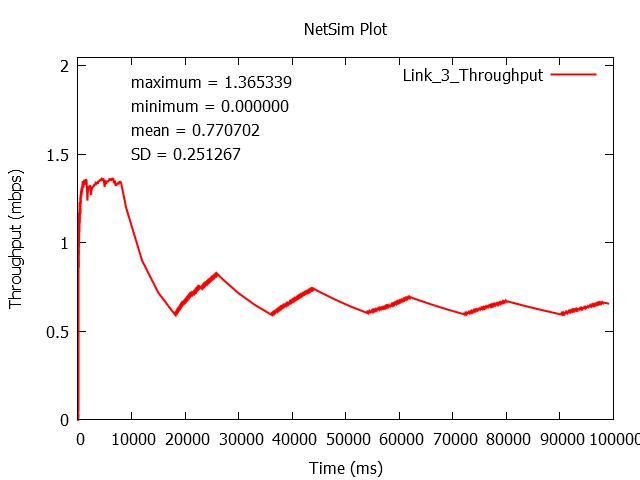
International Journal of Interdisciplinary Research and Innovations ISSN 2348-1226 (online) Vol. 8, Issue 3, pp: (76-88), Month: July - September 2020, Available at: www.researchpublish.com
Fig. 8 (a) Link 3 Throughput for Operational Interval 0 Seconds
Fig. 8 (b) Link 3 Throughput for Operational Interval 0 Seconds
Fig. 9 (a) Link 4 Throughput for Operational Interval 0 Seconds
Fig. 9 (b) Link 4 Throughput for Operational Interval 10 Seconds
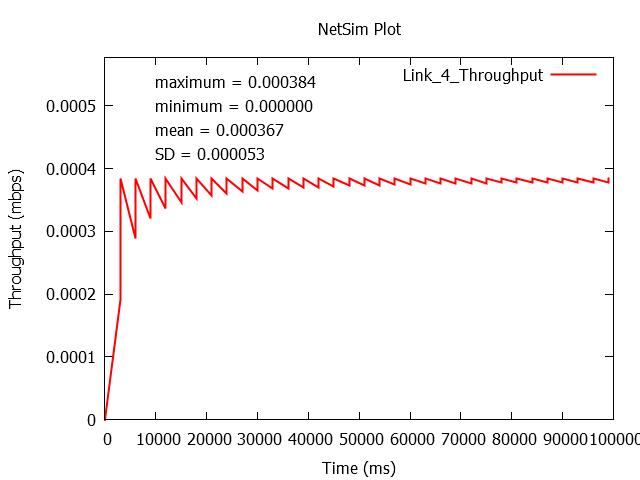

ISSN 2348-1218 (print)
International Journal of Interdisciplinary Research and Innovations ISSN 2348-1226 (online) Vol. 8, Issue 3, pp: (76-88), Month: July - September 2020, Available at: www.researchpublish.com
Fig. 10 (a) APP_1 Throughput for Operational Interval 0 Seconds

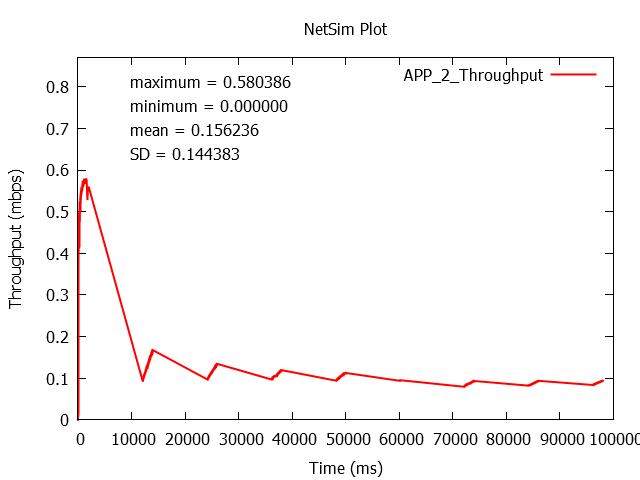
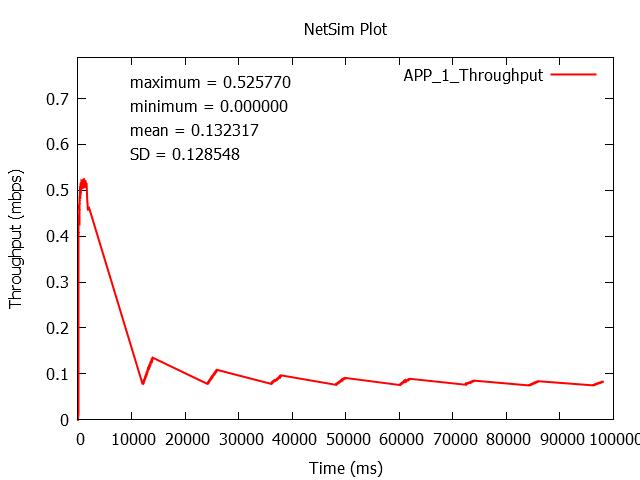

Fig. 10 (b) APP_1 Throughput for Operational Interval 2 Seconds
Fig. 11 (a) APP_2 Throughput for Operational Interval 0 Seconds
Fig. 11 (b) APP_2 Throughput for Operational Interval 10 Seconds
In Fig. 12, Interference Time of Primary User is demonstrated with different Operational Intervals. It is noticed that this parameter is having some random nature. Basically, this interference time represents the interference of Primary User with Cognitive Radio Users or base station
ISSN 2348-1218 (print)
International Journal of Interdisciplinary Research and Innovations ISSN 2348-1226 (online) Vol. 8, Issue 3, pp: (76-88), Month: July - September 2020, Available at: www.researchpublish.com
In Fig. 13, Operational Time of Primary User is demonstrated with different Operational Intervals. It is noticed that operational time parameter is decreasing with increase in operational interval. As Cognitive Radio Users will get more time to utilize the frequency band which is allocated to Primary User. So operational time of Primary user will decrease. In Fig. 14, Idle Time of Primary User is shown with different Operational Intervals. It is observed that idle time of Primary User increases with respect to increase in operational interval. As Cognitive Users are getting more benefit of spectrum access and Primary User goes for idle.
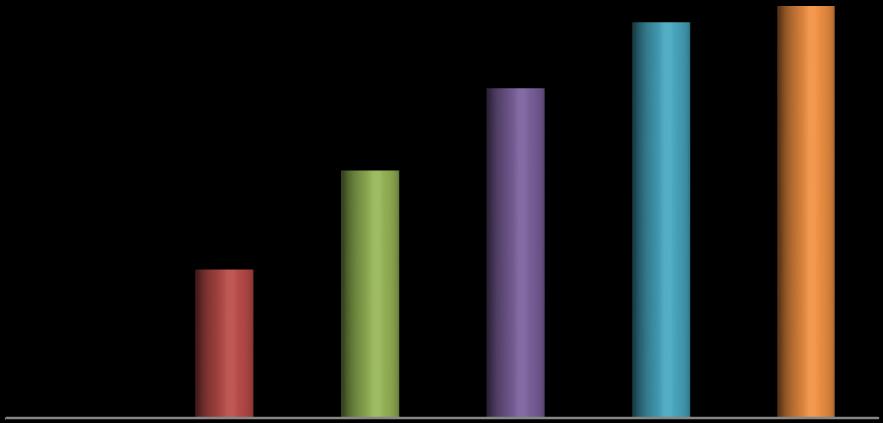

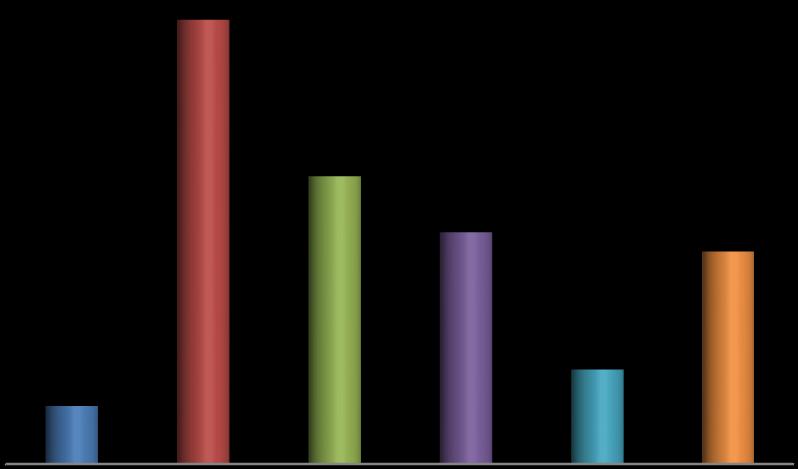
ISSN 2348-1218 (print)
International Journal of Interdisciplinary Research and Innovations ISSN 2348-1226 (online) Vol. 8, Issue 3, pp: (76-88), Month: July - September 2020, Available at: www.researchpublish.com
Further, Fig. 15 and Fig. 16 are depicted the throughput of Application 1 and Application 2, respectively. From Fig. 15 it is observed that the maximum throughput between Cognitive Radio Users, i.e., CR1 and CR2 is 0.232251 Mbps at Operational interval of 10 seconds. Similarly, Fig. 16 represents the Throughput between Cognitive Radio User CR 1 and a wired node 1 and the maximum throughput achieved is 0.288873 Mbps.
Throughput(Mbps) S2-D3
Throughput (in Mbps)
Opeartional Interval (in Seconds)
Fig. 15: Throughput Application 1 with respect to Operational Interval
Throughput (in Mbps)
Throughput(Mbps) S2-D6 0 2 4 6 8 10
Opeartional Interval (in Seconds)
Fig. 16: Throughput application 2 with respect to Operational Interval
Fig. 17 is demonstrating a very important parameter of cognitive radio network which is spectral efficiency. It is noticed in Fig. 17 that spectral efficiency performance metric is increasing with increase in operational interval it is because Cognitive radio users are fully utilizing the spectrum of Primary Users at operational interval 10 seconds. It is noticed in Fig. 17 that the maximum spectrum efficiency is 0.32607 Mbps/Hz at operational interval of 10 seconds.
Spectral Efficiency
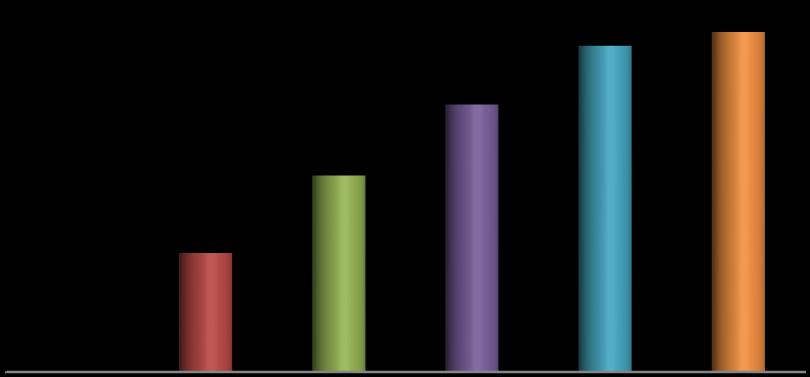
Spectral Efficiency (in Mbps/Hz)
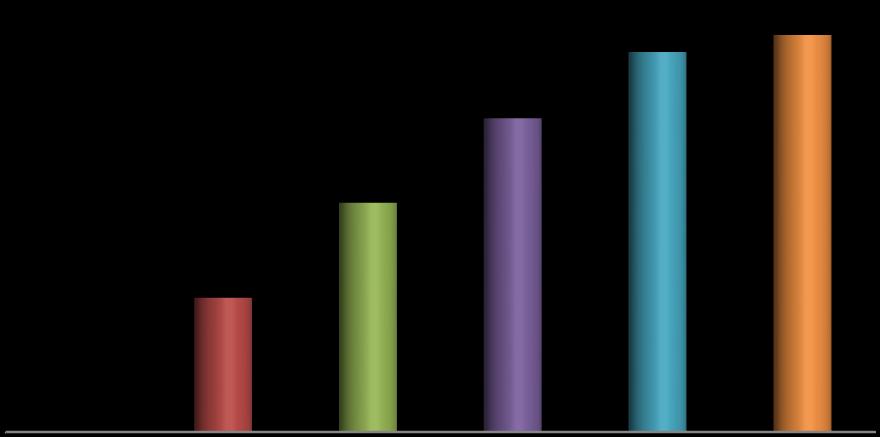
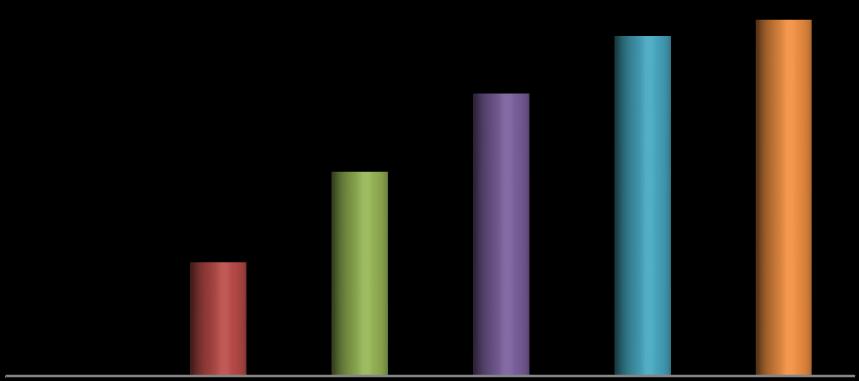
Opeartional Interval (in Seconds)
Fig. 17: Spectral Efficiency with respect to Operational Interval
ISSN 2348-1218 (print)
International Journal of Interdisciplinary Research and Innovations ISSN 2348-1226 (online) Vol. 8, Issue 3, pp: (76-88), Month: July - September 2020, Available at: www.researchpublish.com
Finally, the performance parameter delay is illustrated in Fig. 18 and Fig. 19 for Application 1 and Application 2, respectively. It is observed from Fig. 18 that this delay is maximum at operational interval of 2 seconds which is 41472988.01 micro seconds and minimum at an operational interval of 10 seconds which is 25333030.97 micro seconds. It is also key parameter to notice that when this delay is minimum the Application throughput will be maximum. So there is also a need to find some techniques through which delay in the system can be reduced. Similarly, Fig. 19 is showing the delay with respect to operational interval. In this figure maximum delay is 39891754.14 micro seconds at 2 second of operational interval and minimum delay is 20749025.04 micro seconds at an operational interval of 10 seconds.
It is observed that the Application Throughput 2 is more compared to Application Throughput 1 it is because delay is less in Application 2 as compared to Application 1.
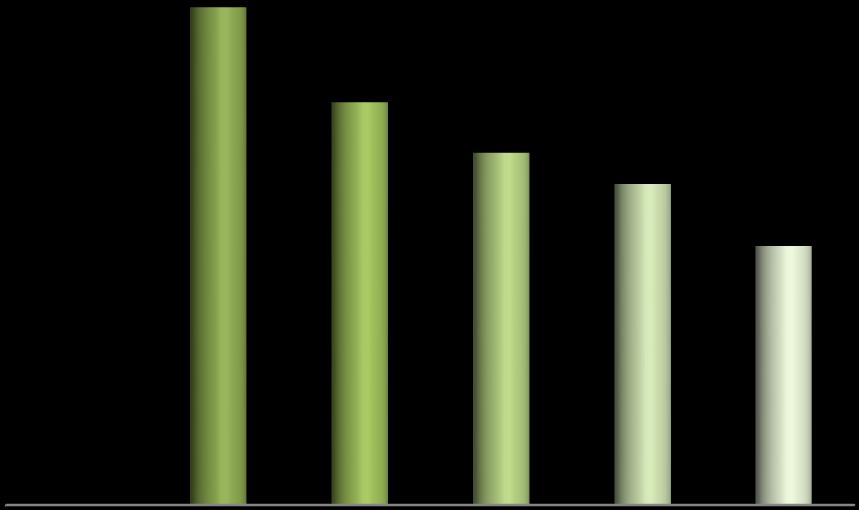
Delay (in micro seconds)
Delay (in micro seconds)
Delay(microsec)S2-D3 0 2 4 6 8 10
Opeartional Interval (in Seconds)
Fig. 18: Delay for Application 1 with respect to Operational Interval
Delay(microsec)S2-D6 0 2 4 6 8 10
Opeartional Interval (in Seconds)
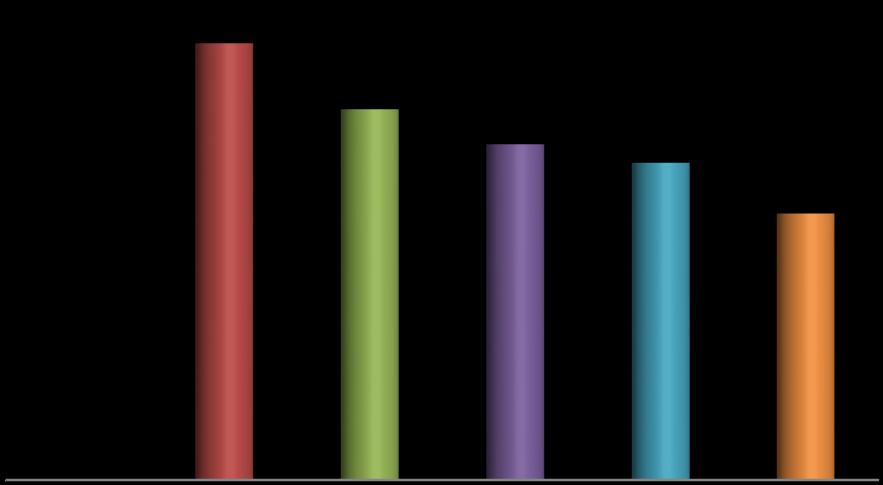
Fig. 19: Delay for Application 2 with respect to Operational Interval
In this paper, performance of a CRN is demonstrated using NetSim simulator. Number of performance parameters such as spectral efficiency, delay, Interference time, throughput, operational time, Idle time, payload transmitted, packet transmitted are analysed. It is concluded that with the increase of operational Interval, spectral efficiency as well as throughput both the parameters increases which is practical as secondary users are getting more time for their operation with increase in operational interval. It is also shown that the delay parameter is decreasing in both the Applications with increase in operational interval.
ISSN 2348-1218 (print)
International Journal of Interdisciplinary Research and Innovations ISSN 2348-1226 (online) Vol. 8, Issue 3, pp: (76-88), Month: July - September 2020, Available at: www.researchpublish.com
Further, this work can be extended to evaluate these parameters with the increase in the number of Primary User or Secondary Users and performance can be analysed.
[1] Haykin, S. (2005). Cognitive radio: brain-empowered wireless communications. IEEE journal on selected areas in communications, 23(2), pp. 201-220.
[2] J. Mitola, G.Q. Maguire, Cognitive radio: making software radios more personal, IEEE Pers. Comm. (ISSN: 10709916) 6 (4) (1999) 13–18. http://dx.doi.org/10.1109/98.788210
[3] Mishra, S., & Trivedi, A. (2014, September). Relay selection with channel allocation for cognitive radio relay channels in CRN. In IEEE Eleventh International Conference on Wireless and Optical Communications Networks (WOCN) pp. 1-4.
[4] Mishra, S., & Trivedi, A. (2013, August). Exploiting opportunistic decode-and-forward cooperation for cognitive radio relay channels in multi-antenna cognitive radio networks. In IEEE International Conference on Advances in Computing, Communications and Informatics (ICACCI), pp. 155-158
[5] Li, L., Zhou, X., Xu, H., Li, G. Y., Wang, D., & Soong, A. (2011). Simplified relay selection and power allocation in cooperative cognitive radio systems. IEEE Transactions on Wireless Communications, 10(1), pp. 33-36.
[6] Sadhana Mishra and Aditya Trivedi, Performance Study of MIMO transmissions with Joint Channel Allocation and Relay Assignment," Wireless Personal Communication (WPC), Springer, DOI: 10.1007/s11277- 017-4317-x.
[7] Sadhana Mishra and Aditya Trivedi, Performance Study of MIMO transmissions with Joint Channel Allocation and Relay Assignment,"Vol.96, No. 2, pages 2651-2665, 2017. Wireless Personal Communication, Springer.
[8] Sadhana Mishra and Aditya Trivedi, Performance Study of an Improved Resource Allocation Scheme with FullDuplex Relaying, "DOI:10.1007/s11277-017-5002-9, 2017, Wireless Personal Communication (WPC), Springer.
[9] Gunnery Srinath, Sadhana Mishra, and Aditya Trivedi, Hybrid Cognitive Gaussian Two-way relay channel: Performance Analysis and Optimal resource allocation,"Vol.27, pages 106-115, 2018, Physical Communication, Elsevier.
[10] Network-Simulator-NetSim-www.tetcos.com